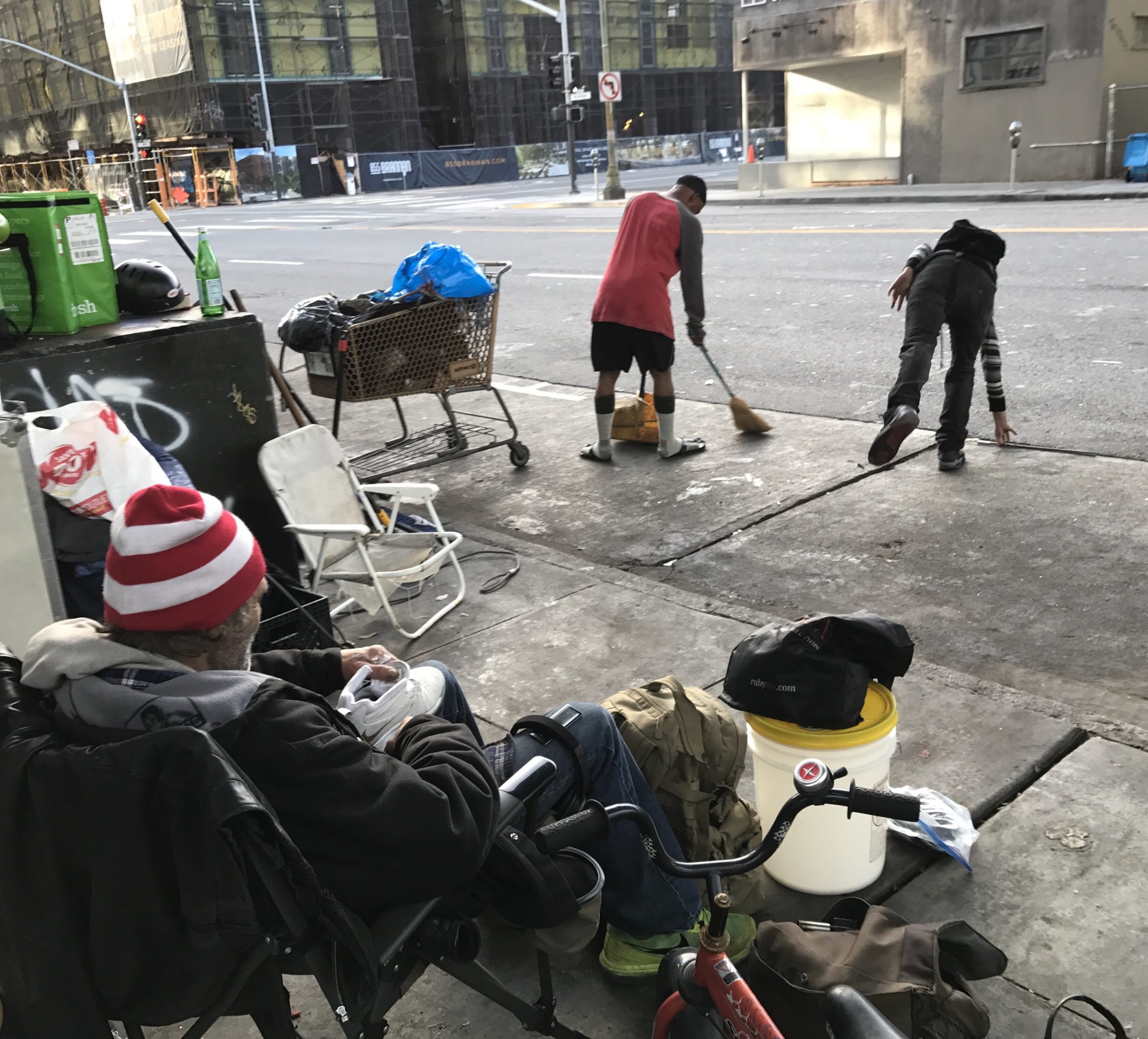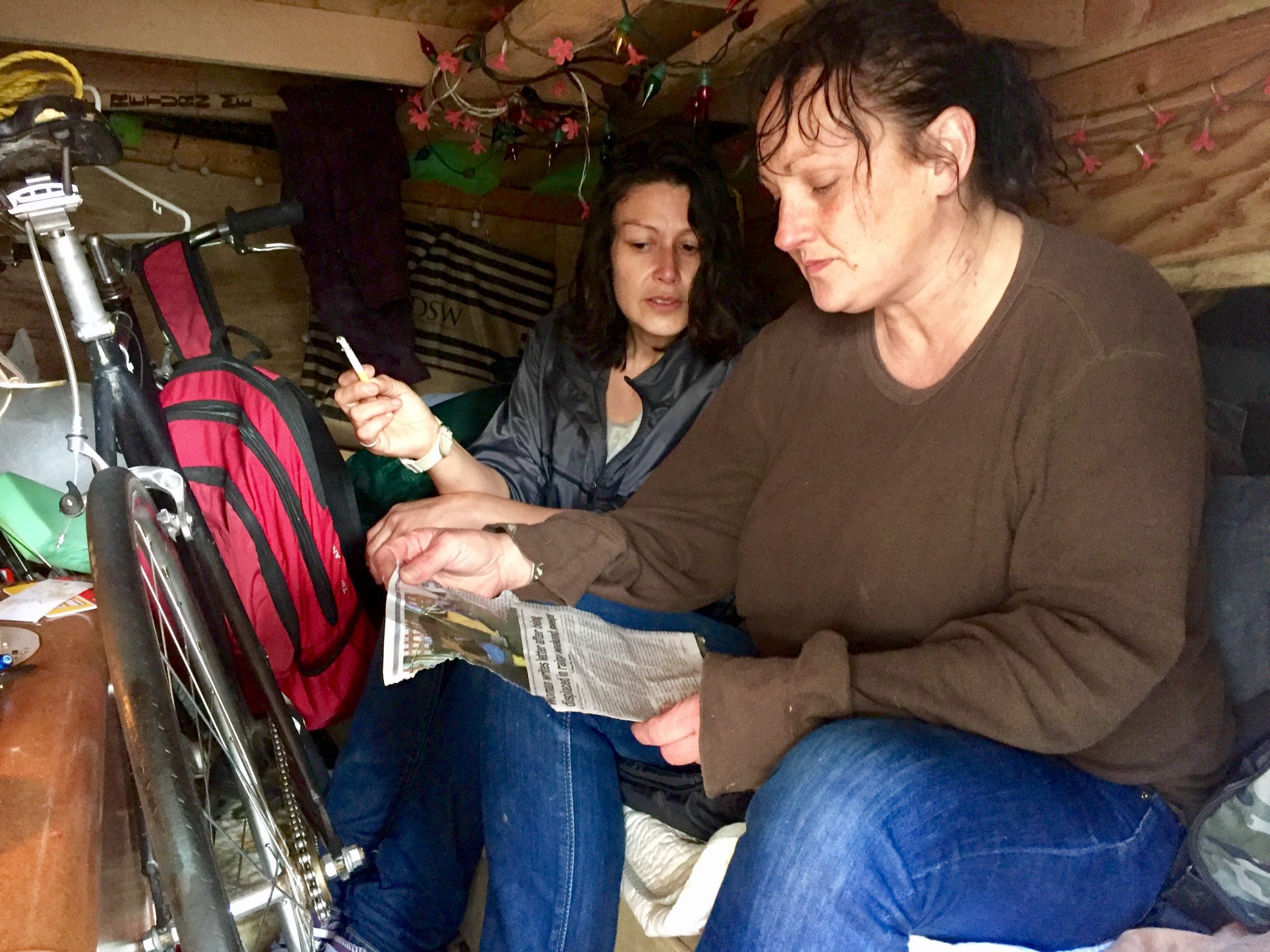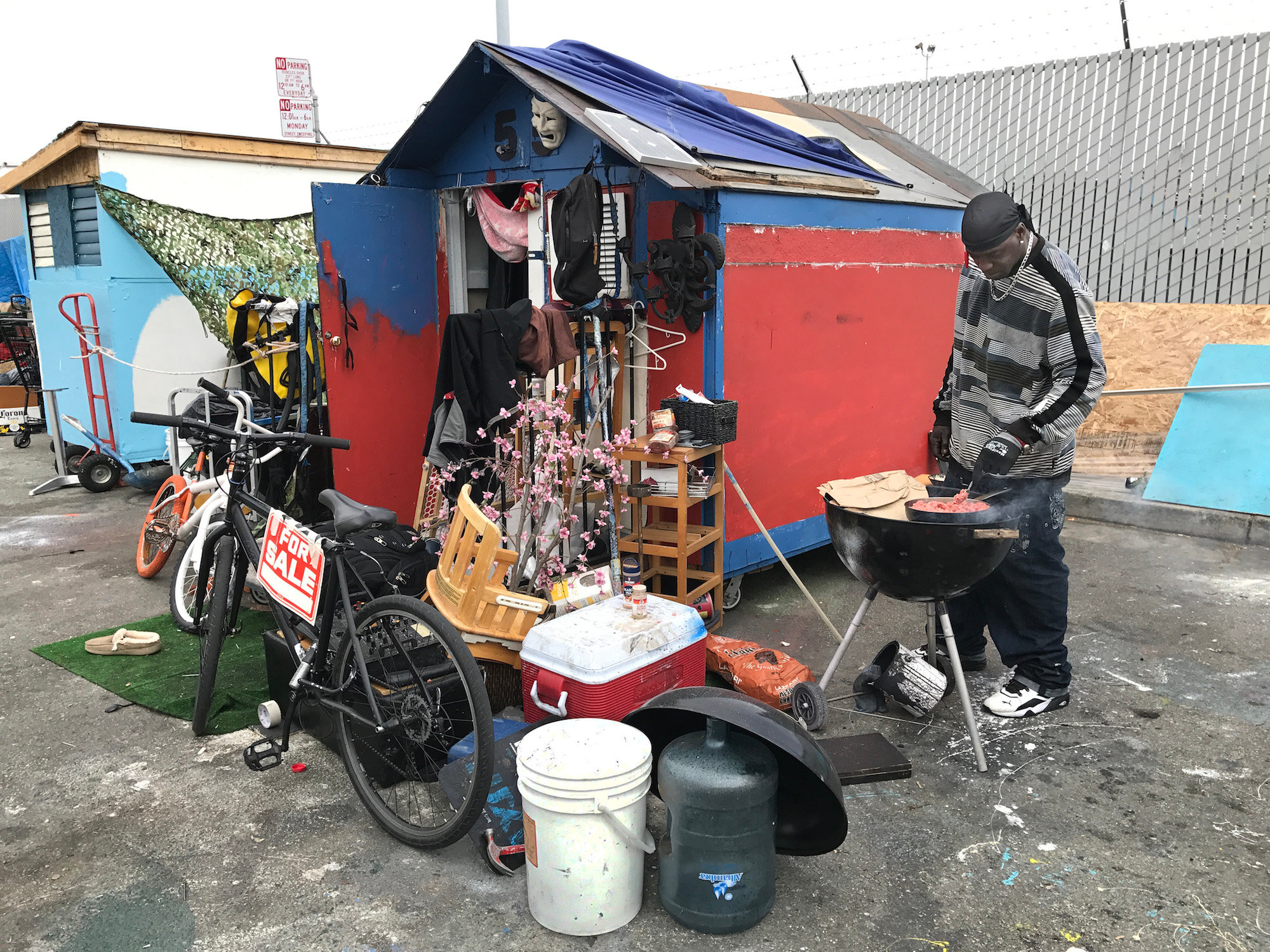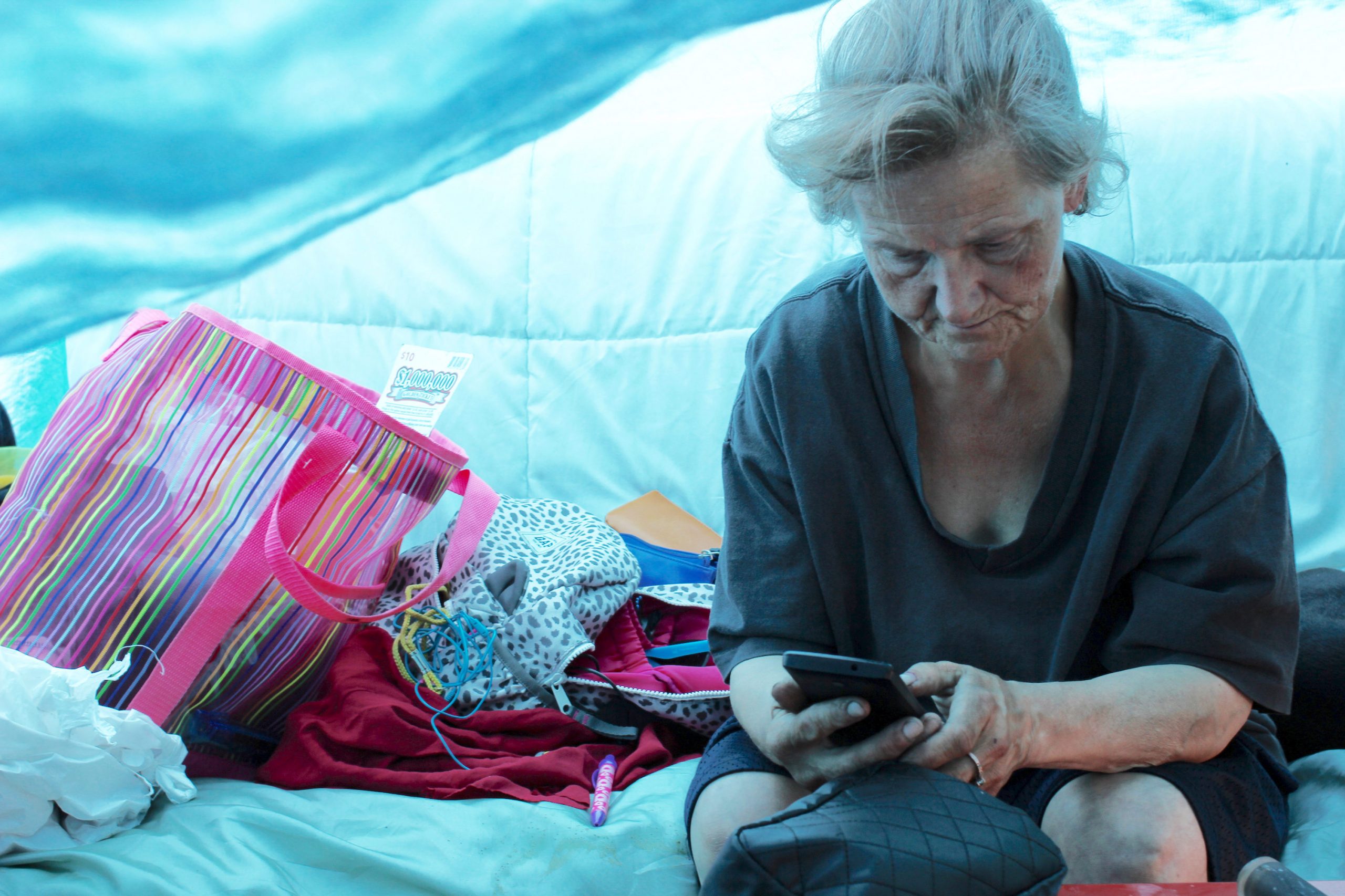This article was updated Nov. 16. An abridged version appears in the winter 2019 print edition of the Public Press.
In the lead-up to the November election, arguments about San Francisco’s Proposition C hinged on a few key numbers, such as homeless people who would be helped and projected long-term job losses resulting from a tax increase on the city’s largest businesses.
Seemingly conflicting figures made it difficult for voters to assess potential costs and benefits of the measure, which promised to roughly double current spending on housing, shelters, health care and social services to prevent homelessness. In the end, the measure passed easily, with 61 percent of the votes — but not enough to prevent it from being sucked into a legal challenge over whether such tax hikes need two-thirds approval.
The day after the election, City Controller Ben Rosenfield said his office would collect the new revenue but not allow it to be spent until courts settle the legality of the homelessness levy and a similar tax increase voters approved in June.
The city attorney argues that this type of tax measure needs only a simple majority to pass. But the Howard Jarvis Taxpayers Association and commercial property owners have sued to keep the city from implementing the June measure, which also did not receive two-thirds voter approval.
If Proposition C stands, it would create enough tax revenue to provide housing and social services in more than 100,000 instances over the next decade, based on a Public Press analysis of internal government documents, as well as interviews with policy experts and a chief architect of the measure.
The research, published the day before the election, yielded three key findings:
- City officials and Jennifer Friedenbach, who co-authored the ballot measure, calculated its potential impact by dividing the projected tax revenue by the average cost per client for various homelessness programs. In a scenario where the annual revenue reached $250 million, the low-end projection, it would provide assistance an estimated 103,000 times in a 10-year period. This would be total services rendered, not unique individuals served. It counts people for as many times as they receive any type of housing or social service.
- That estimate, however, is 40,000 more instances than the official 63,000 figure published by the controller’s office in September. The city’s chief economist did not include the number of people who could receive mental and behavioral health services, a figure that Friedenbach said she got from the city’s former health director. The controller’s report did not explain the omission.
- Friedenbach, executive director of the nonprofit Coalition on Homelessness, estimated that the public health department could provide mental and behavioral health services in about 4,000 instances per year over 10 years, and more if the tax revenue were higher. These services would absorb at least one-quarter of the Proposition C revenue.
Board Can Adjust Spending
Any predictions of the levels of service Proposition C would make possible should be treated as ballpark estimates, despite granular breakdowns contained in the math of the controller and the proponents.
The Board of Supervisors would be able to adjust how the additional tax revenue was spent, within limits, affecting the number of people who received certain types of housing or social services. Under California law, all local tax increases require voter approval. Because Proposition C has no sunset provision, its mandates would remain in effect unless repealed.
Related: Wealthy Opponents Of Proposition C Bankrolled 2016 Tent Ban (via MapLight)
Proposition C, which was put on the ballot by signature petitions, split San Francisco’s political leadership and the city’s business and technology moguls. The measure’s supporters included Salesforce CEO Marc Benioff, U.S. Senator Dianne Feinstein, congresswomen Nancy Pelosi and Jackie Speier, and state Assemblyman Phil Ting. It also had backing from the San Francisco Board of Supervisors’ progressive members, as well as new supervisors Rafael Mandelman and Vallie Brown. They argued that the scale and persistence of the homelessness crisis merited tapping the city’s deepest pockets for this additional funding.
Impact on Businesses and Tax Structure
The opposition was led by San Francisco Mayor London Breed, state lawmakers Scott Wiener and David Chiu, the Chamber of Commerce, venture capitalist Ron Conway and Twitter co-founder Jack Dorsey, who is also the CEO of Square. They claimed it would be a giant job-killer and drive companies out, attract more homeless people, have no spending accountability and complicate future funding because of the lawsuit challenging all signature-driven tax measures.
The measure would raise the gross receipts tax on local businesses with annual revenues greater than $50 million. The tax would vary according to the type of business — 0.175 percent to 0.690 percent — and would generate between $250 million and $300 million in additional tax revenue each year, according to the controller’s report, which was assembled by the city’s chief economist, Ted Egan.
The tax would affect between 300 and 400 local businesses. They make up 3 percent of companies paying the gross receipts tax, and have paid 57 percent of all business tax revenue citywide. With Proposition C, their share would grow to 67 percent. This would make San Francisco’s business tax structure more progressive, hitting larger companies harder than smaller ones, the controller’s report concluded.
But the additional gross receipts tax could cause an estimated net loss of between 725 and 875 jobs citywide over the next 20 years, the report said, adding that it was “difficult to quantify” whether companies might relocate all or some of their operations.
“A significant negative economic risk not included in our direct analysis is that larger businesses may relocate or expand in other cities as a result of the tax, which will raise the cost of doing business in San Francisco,” the report cautioned. “To the extent that this relocation occurs, economic impacts could be more negative than we project.”
Also, companies leaving the city “would have negative multiplier effects on other industries,” the report added.
But it also noted that last year’s cutting of the top corporate tax rate from 35 percent to 21 percent “would outweigh the proposed 0.5% gross receipts tax increase for the majority” of affected companies. And not all of the controller’s economic forecasts of the new tax on the local economy were negative.
“Additional positive factors, not quantified in this analysis, include an expected improvement in health outcomes, a reduction in acute service costs, and an attractiveness of the City, because of the likely decline in the homeless population,” the report stated. “To the extent that these policy objectives are achieved, the economic impact could be better than we project.”
Further, increased spending on housing and related services “will stimulate those sectors of the economy, leading to positive multiplier effects on other industries.” But the controller’s office said it was “unable to quantify the fiscal or economic benefits of these expected improvements.”
Officially, based on the most recent biennial point-in-time headcount in 2017, an average of about 7,500 people reside on the city’s streets or in shelters. That figure certainly underplays the number of people experiencing homelessness, however. Jeff Kositsky, director of the Department of Homelessness and Supportive Housing, has said that his office serves about 20,000 people per year, many of whom are marginally housed during part of any year and need services to prevent them from losing a roof over their heads.
For the previous fiscal year, which ended June 30, the homelessness department spent about $250 million, according to documents provided to the Public Press. The controller’s analysis of Proposition C said total spending on homelessness services for all relevant departments reached $380 million over the same period.
How Many Might Benefit?
Friedenbach, who headed the Yes on C campaign, said she drafted the measure earlier this year while consulting with the heads of the city departments that would spend the tax revenue if voters approved it. She asked for data that would help her craft the language, which she offered them for feedback. These conversations enabled her to estimate the number of people who might benefit from the measure’s funding.
She said she spoke with Kate Hartley, director of the Mayor’s Office of Housing and Community Development; Kositsky, of the homelessness department; and Barbara Garcia, the former director of the San Francisco Department of Public Health. Garcia resigned in August.
Hartley declined to say whether she and Friedenbach discussed the measure. “I can’t really speak to this, because the mayor has taken a position on it, and that speaks for itself,” Hartley said.
Kositsky confirmed that Friedenbach reached out to him. “Yes, Jenny asked for budget and other information that I would provide to anyone who would ask,” he said. “How she used it, I don’t know.” Kositsky did not state a position on Proposition C, although he donated $500 to the pro-C campaign in June.
Garcia confirmed that Friedenbach had talked to her about “the amounts of dollars they were looking for, the types of oversight, the services.”
“It was a significant amount of dollars for services,” Garcia told the Public Press. When asked if she had an opinion about that level of spending, and what it might let the health department accomplish, she said, “I’m not going to go into details about that. I’m not in a position to say, since I’m not at the department anymore.”
Mental Health Care Estimates
Friedenbach later told the Public Press that Garcia provided the estimate of the number of times a year the health department could render mental and behavioral health services: 4,000 to 5,000. Garcia did not respond to Public Press attempts to verify the exchange, which Friedenbach said occurred via text message in late July.
Friedenbach shared an excerpt of the messages:
Friedenbach: “… different ways with some funds on case management, facilities, hotel rooms etc. I was estimating around 700. Have you played with any numbers? Does 700 feel safe? (Btw looks like we are going to win this so be ready!)”
Garcia: “We think it’s more with the levels of care from outpt case mgmt and housing people would be getting multiple services a year we think 4-5,000 a year.”
Friedenbach: “Unduplicated? Clients”
Garcia: “Yes”
The controller’s office projected that Proposition C would create “$60-$75 million in new funding, annually, for outreach and mental health treatment.” That range corresponds with scenarios in which the tax earned the minimum and maximum annual revenue. Therefore, using Garcia’s estimate of services rendered, health care recipients would cost the city about $15,000 per person.
But that calculation might actually be very low, a confidential source with knowledge of homelessness and mental health programs told the Public Press. If correct, and the per-client cost were higher, then spending on mental and behavioral health would help fewer people.
The health department would not provide an estimate on the basis of averages over all services.
“We don’t calculate per patient/client costs for any of these programs,” communications director Rachael Kagan said in an email to the Public Press. “There is extensive variability in the type of services each patient requires, including the type of staffing, duration and frequency of treatment. We don’t find it useful to create an average, so we don’t have that information available.”
Questioning Accountability
With the city’s current annual homelessness outlay of more than a third of a billion dollars, how that money and future funds would be spent was one of the opposition’s biggest talking points.
The No on Prop C campaign argued that the measure lacked “accountability,” in part because it “has no detailed plan for how the money would be distributed.”
Although that is a matter of interpretation, the proposition’s text does outline an oversight structure. The measure does not mandate that each type of tax-funded housing and social service go to specific quotas of recipients. Instead, it requires that proportions of revenue go toward general categories of assistance:
- At least 50 percent for getting homeless people into housing. This would primarily include acquiring, creating or rehabilitating permanently affordable housing where the tenants receive social services on site, though up to 12 percent of this money could go toward the city’s rapid rehousing program — rental subsidies lasting up to five years, for people who have recently become homeless.
- Of all the beneficiaries of these types of spending, at least 25 percent must be families, and at least 20 percent must be “homeless youth” — adults 18 to 29. (See the spring 2018 Public Press special report on rapid rehousing, “Most Homeless Families Helped by City Rent Programs Move Out of S.F.”)
- At least 25 percent for mental and behavioral health services. This could include street-based care, substance-abuse treatment and medications, and intensive case management.
- Up to 15 percent for programs designed to prevent homelessness, such as legal assistance or help paying a security deposit or utility bill.
- Up to 10 percent for temporary beds, likely in shelters or navigation centers, as well as for public bathrooms or programs to improve hygiene.
All new revenue would go into a dedicated fund, not the city’s general fund.
The Board of Supervisors could shift these proportions by pulling funds from the other categories to bolster spending on housing or mental health programs. The board’s political alignment changed Nov. 6, with progressives gaining solid control of the 11-member body. It’s not yet clear how that shift might affect funding decisions when they take their seats in January.
The board would receive spending advice from a nine-member oversight committee, as mandated by Proposition C. The board would appoint four members, the mayor would appoint four and the city controller would appoint one.
These expenditures could only supplement, not replace, the city’s other homelessness spending.
Differing Interpretations
Many news reports and other voter resources made specific claims about how many people would get new housing, shelter beds or social services, but glossed over the potential for Proposition C’s funding to shift in unforeseeable ways.
The campaign committee that supported the measure — Our City Our Home 2018, Yes on C — published an “implementation plan” showing granular, year-by-year breakdowns of how the tax revenue would be spent, and the number of people served in each category of assistance. Some of those figures also appeared in the official proponent argument for Proposition C in the city’s voter information pamphlet.
But the plan showed just one scenario for how the money would flow.
For example, the pro-C campaign’s plan stated that the funding would create 1,075 beds for temporary stays in shelters or navigation centers. It is true that this could happen, but the Board of Supervisors could also choose to siphon money from this purpose and pour it into affordable housing instead, helping fewer people but in a more permanent way.
The plan also states that the money would let the city acquire “up to 1,000 currently vacant units” in single-room occupancy hotels, as additional units of affordable housing.
The Public Press reported in fall 2017 that 1,827 SRO rooms were being held vacant for a variety of reasons. Some needed renovations, or repairs after fire damage. In other cases, owners were intentionally leaving rooms empty to make their buildings easier to sell for top dollar. During the June election’s mayoral race, some candidates cited this as a problem that they would solve.
Friedenbach said that Kositsky had already identified the 1,000 units, and that their owners were willing to lease them to the city if the homelessness department came up with the money to subsidize rents for the new occupants and fix any units in disrepair.
Kositsky said the number of units ready for acquisition was lower.
“I don’t think it’s 1,000, but I don’t know for sure,” he said. “I’m aware of at least 300 units.” They are in five buildings he declined to identify, because the owners have not yet joined the city’s master-lease program.
“We are looking at them in light of the current funding that we have,” Kositsky said before the November vote. “I don’t have enough for all of them.”
The passage of Proposition C appears likely to change that.














